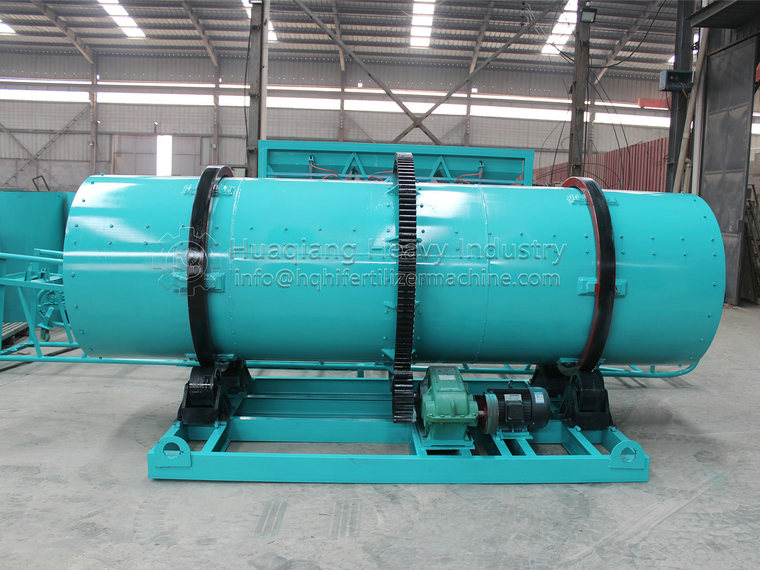The working advantages of drum granulator in NPK compound fertilizer production line
Drum granulator is a kind of granulating equipment widely used in the production of compound fertilizer, organic fertilizer, biological fertilizer, controlled release fertilizer and other fertilizers. It is suitable for cold, hot granulation and large-scale production of high, medium and low concentration compound fertilizer.
The main working mode of the drum granulator is wet granulation. Through a certain amount of water or steam, the basic fertilizer can be fully chemically reacted after being humidified in the cylinder. Under a certain liquid phase condition, with the help of the rotating movement of the cylinder, the extrusion force between the material particles can be produced to agglomerate into pellets.
The process flow of compound fertilizer production line of drum granulator is divided into: raw material batching, raw material mixing, raw material granulation, particle drying, particle grading, particle cooling and finished product packaging. Compound fertilizer can provide rich nutrients for crops. The production process of compound fertilizer is to combine the main nutrient elements (such as N, P, K and other trace elements) needed by crops into grains suitable for cultivation by chemical technology, and then the crops absorb the nutrients from the soil.
The drum granulator cylinder is lined with special rubber plate or acid resistant stainless steel plate, which realizes automatic scar removal and tumor removal and cancels the traditional scraper device. The NPK fertilizer granulator has the characteristics of high ball forming strength, good appearance quality, corrosion resistance, wear resistance, low energy consumption, long service life, convenient operation and maintenance, etc.








.jpg)